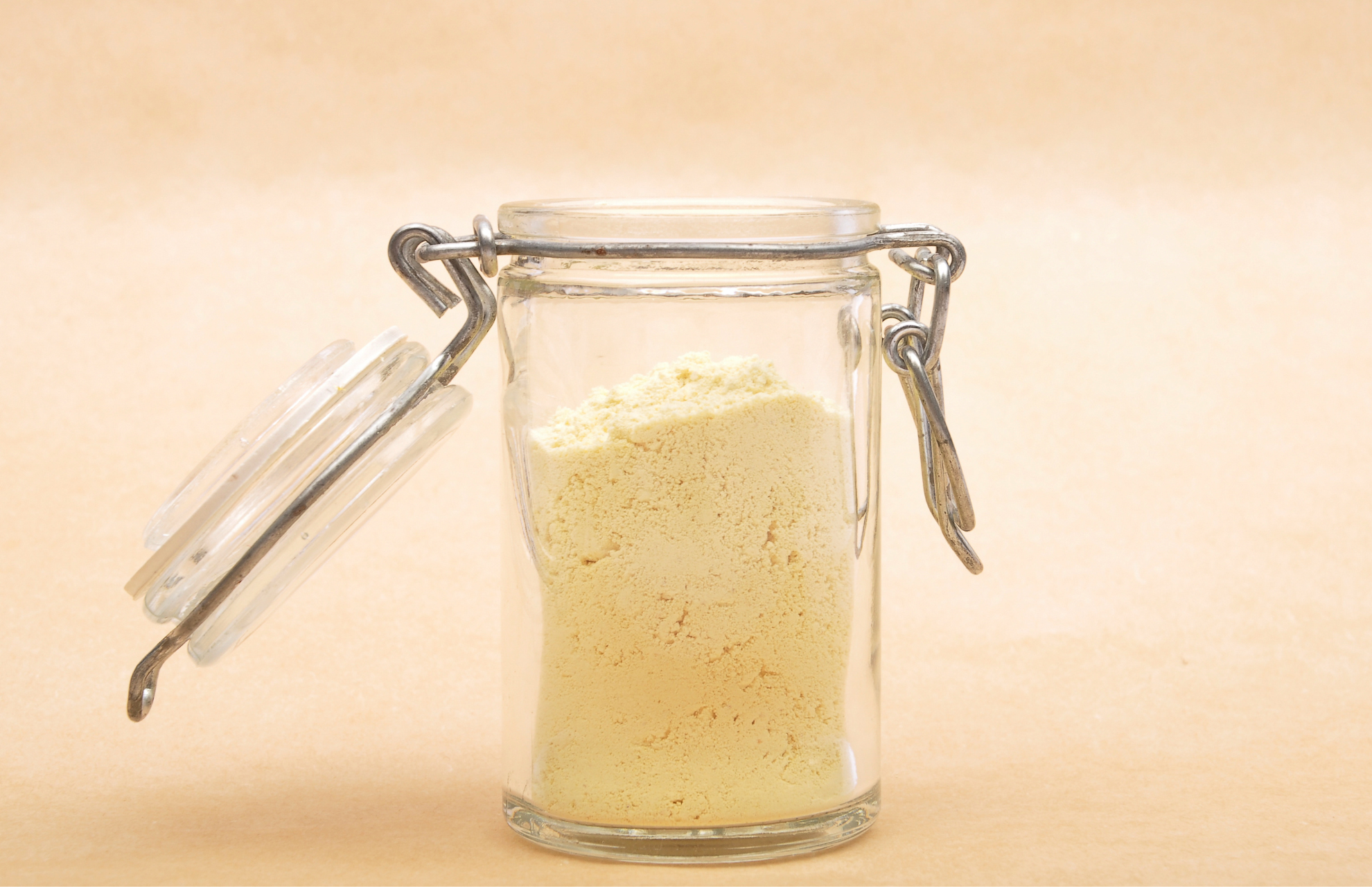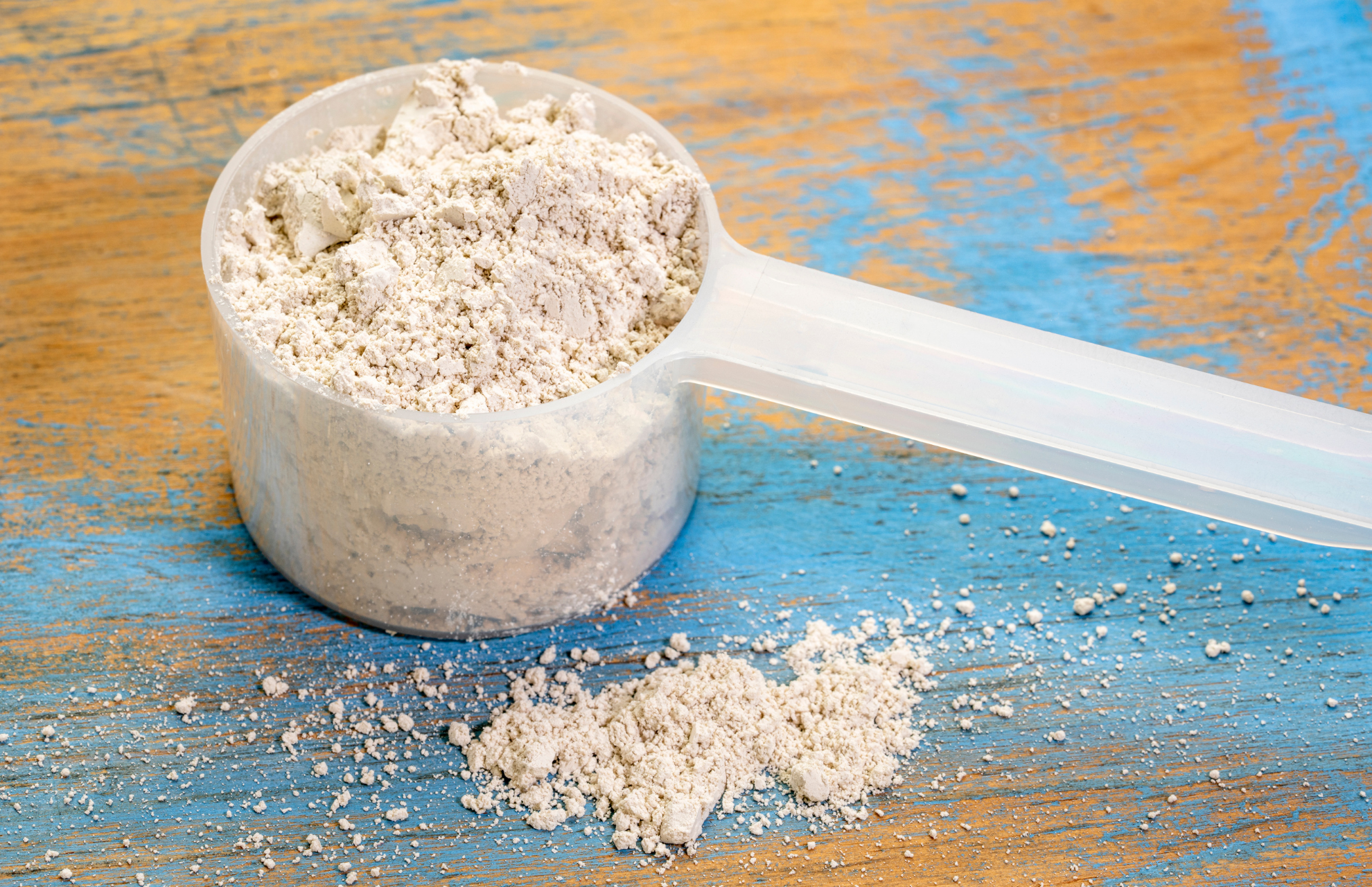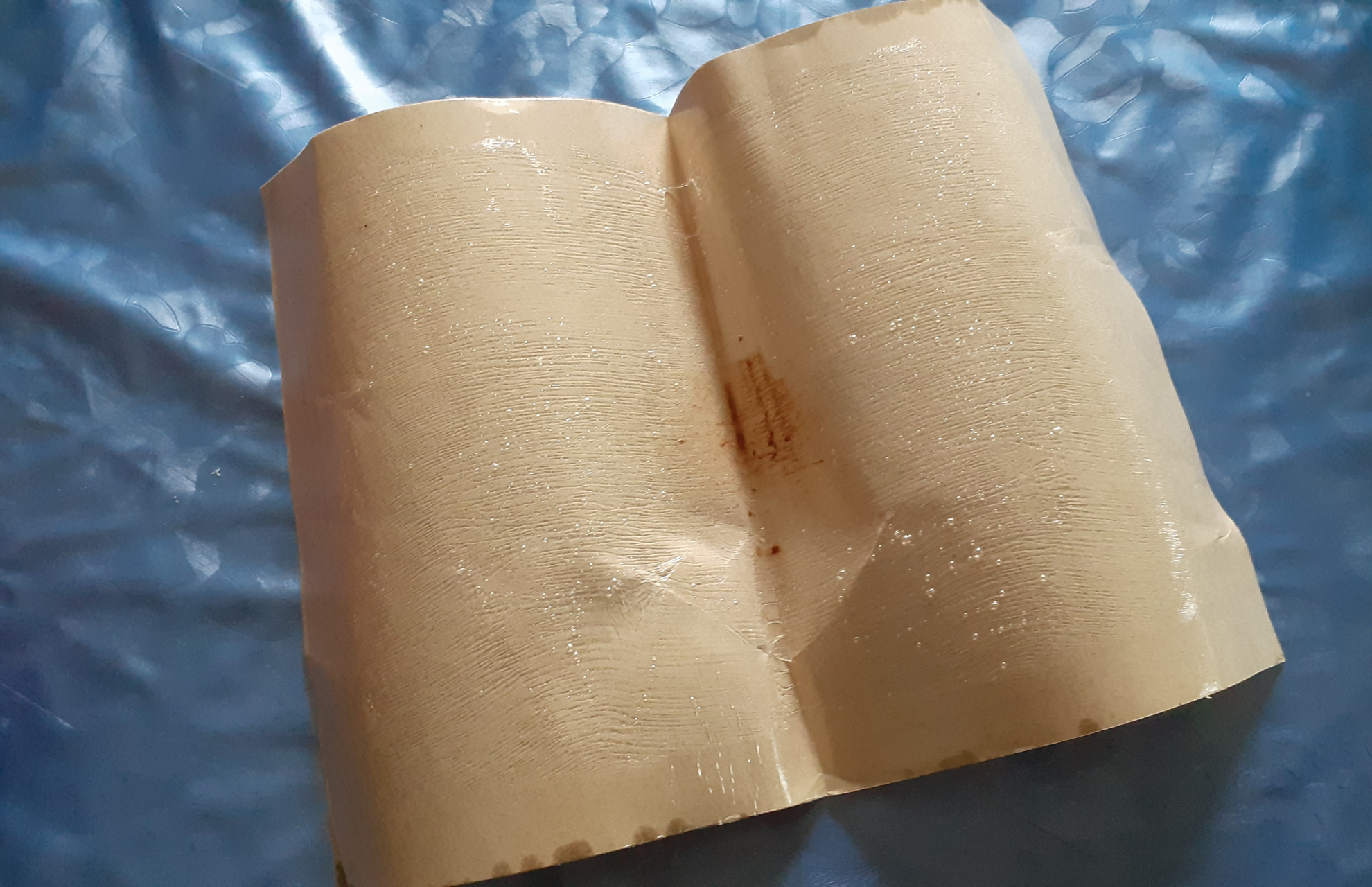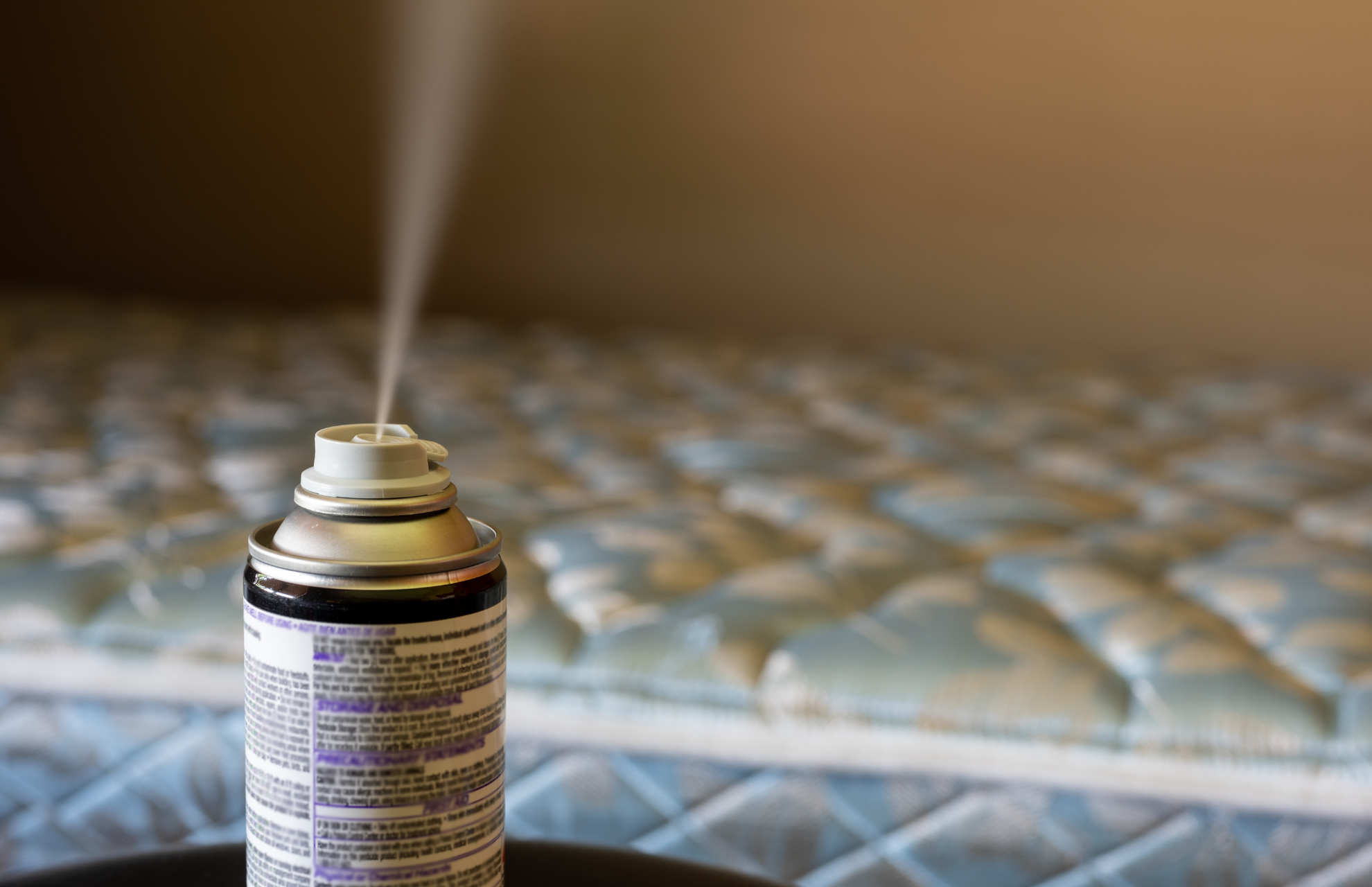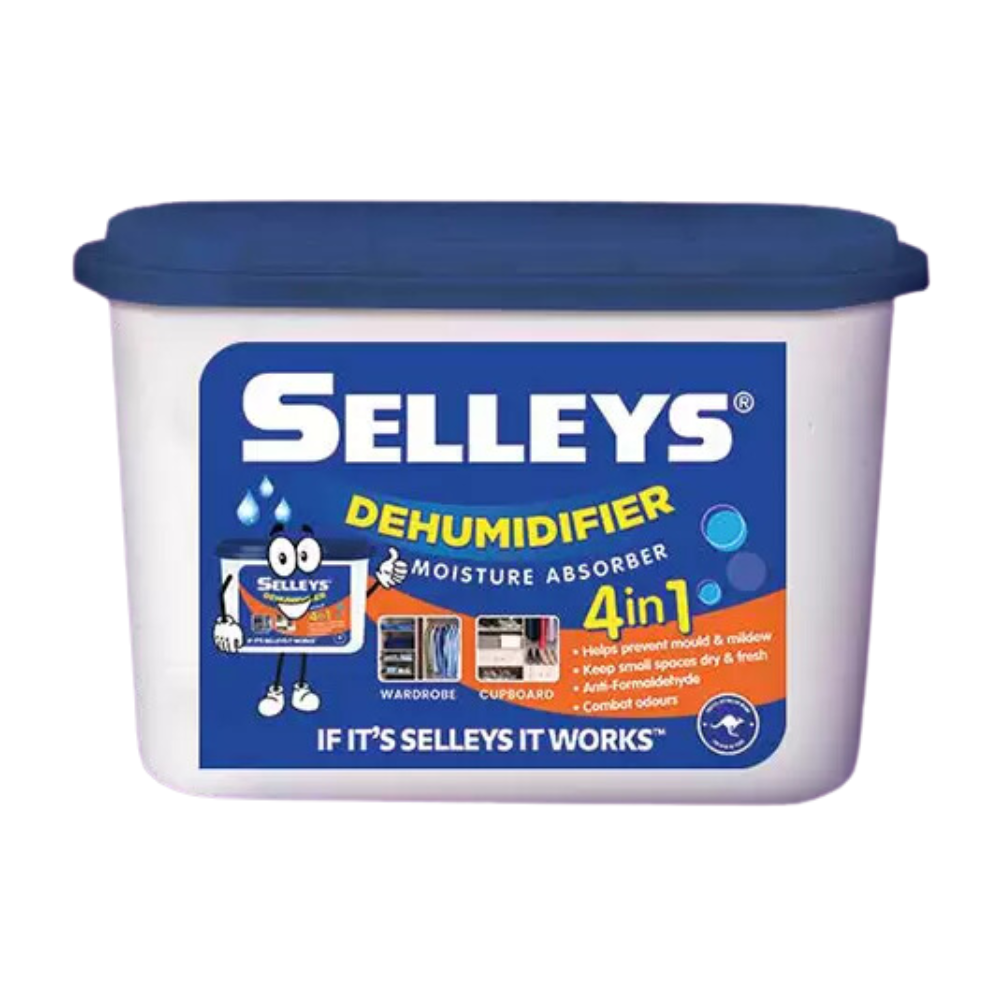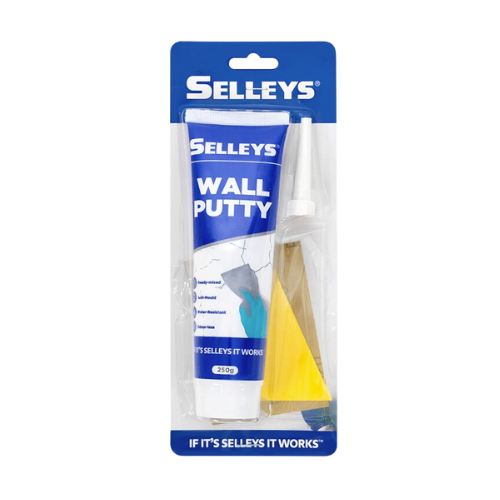Have you ever encountered shiny critters scurrying across your wallpaper or books at night? These pesky little creatures could be silverfish – tiny insects that feed on anything starchy, sweet or meaty. They can often be a nuisance, leaving holes or yellow stains on your clothes or books.
In this article, we’ll highlight the key characteristics of silverfish and share how you can spot the signs of an infestation. We’ll also show you how to get rid of these pests and prevent them from making your home theirs.
Table of Contents
Characteristics Of Silverfish
In order to identify a silverfish infestation and know how to manage it, you’ll first need to be familiar with the key characteristics of these critters, including their appearance, habitat and diet.
Appearance
Silverfish are tiny, teardrop-shaped insects that grow up to 2.5cm in length. They have a wide head, silver or grey body, and 3 tails at the end of their abdomen. These insects have a scaly fish-like appearance, and their wiggling movements are similar to that of a fish swimming.
Habitat
Silverfish require moisture to thrive and love places where humidity is high. In the wild, they’re natural dwellers of damp, sheltered areas and typically hide under logs, rocks, and within leaf litter. When inside homes, they tend to make themselves comfortable behind furniture, in books, in basements, and near sinks.
Diet
Silverfish are known for their insatiable appetites and are far from being picky eaters. They share a similar dietary preference as other household pests, such as cockroaches and ants, with a particular fondness for starches, carbohydrates, sweets, and protein.
They can snack on a variety of household items, including:
- Paper (e.g. books, newspapers, magazines)
- Cardboard (e.g. boxes, decorations)
- Mould and fungus
- Moist clothing
- Certain types of fabric (i.e. silk, linen, cotton)
- Dried goods (e.g. sugar, flour, cereal)
Silverfish can even feed on the bodies of other dead insects.
Signs Of A Silverfish Infestation
A couple of silverfish can easily multiply and become an infestation. Female silverfish can lay up to 20 eggs each time and can reproduce all year round. In addition, these pesky critters become fully mature within a mere 4 months and have a lifespan of up to 8 years.
While silverfish are nocturnal creatures, only coming out of their hiding spots at night, there are some telltale signs of an infestation that you can look out for even during the day.
Holes in belongings
Identifying the damage caused by silverfish is the simplest and quickest method of knowing if you have an infestation problem on hand. These pests have a preference for starchy foods and these foods can come in the form of wallpaper, books, clothing, cardboard boxes and more. Finding holes in any of the aforementioned items is often a clear sign of a silverfish infestation.
Droppings
Silverfish have unique droppings that resemble tiny black peppercorns. Due to their small size, these droppings are often mistaken for dust or debris. Silverfish droppings are commonly found in areas where they frequent, such as beneath cupboards and on the backings of furniture.
If you’ve been diligently clearing away these droppings but consistently find them reappearing, it’s likely that you’re facing an infestation problem.
Skin moults
Silverfish undergo multiple moults during their lifetime, shedding their skins periodically. Their moulted skins are small, transparent and fragile. If you spot these shells around your house, you may have a silverfish infestation.
Yellow stains
Sometimes, you may not spot the moulted skins of the silverfish. Instead, you may see yellow stains on surfaces such as books, cardboard boxes, magazines, or even on clothing. These stains are caused by a substance that is secreted by silverfish when they moult.
Live silverfish
Silverfish are often difficult to spot as they tend to only come out at night. Hence, seeing live silverfish can be an indication of an infestation in your home.
How To Get Rid Of Silverfish In Singapore
A silverfish infestation can quickly become a nuisance as they leave holes and yellow stains all over your belongings. Here are some effective and easy methods for getting rid of these pests.
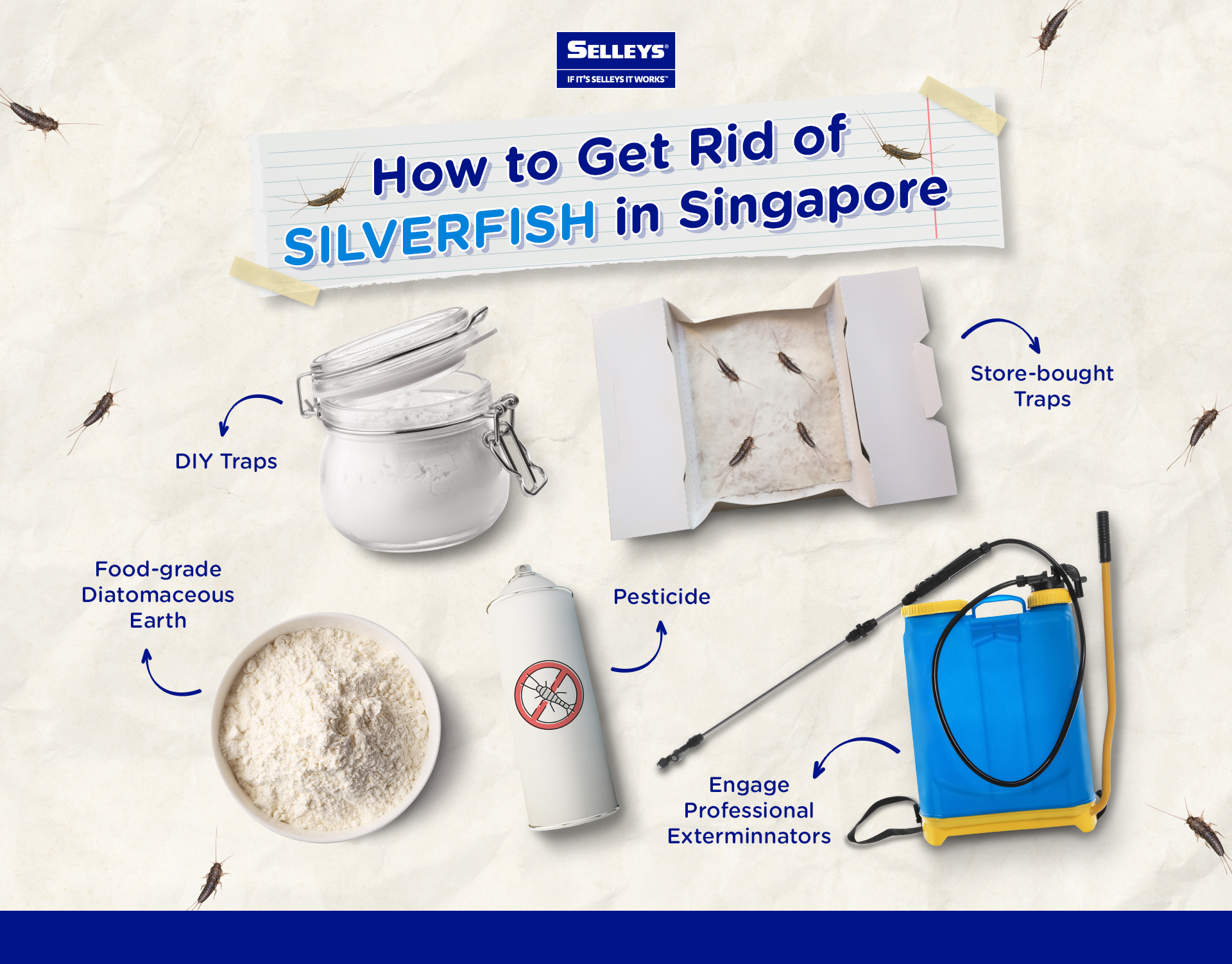
Method 1: DIY traps
Silverfish are obsessed with starchy foods and will stop at nothing to get their little claws on them. Instead of resorting to toxic chemicals, try creating your own DIY trap using a glass bottle/jar.
Wrap the outer surface of the bottle/jar completely with tape. Next, fill the glass bottle/jar with some flour or cereal until it’s half full. Leave the lid open and wait for the silverfish to come looking for food.
While they’ll be able to crawl into the bottle/jar with the help of the tape’s textured surface, they won’t be able to get out. The smooth glass surface on the inside of the bottle/jar will prevent them from escaping.
Method 2: Food-grade diatomaceous earth
Food-grade diatomaceous earth is a powdered substance that is commonly used as an insecticide. The powder has jagged edges that can wound silverfish, and moisture-absorbing properties that will cause them to dehydrate and die.
To use this powder, simply sprinkle it generously on surfaces with high silverfish activity and leave it for 24 hours. It’s important to ensure that the powder remains dry as it loses its effectiveness once it’s wet. After 24 hours, use a vacuum cleaner to remove the powder and silverfish. Remember to clean the surface thoroughly.
If you have pets, children, or family members with respiratory issues at home, avoid using this powder as it can cause respiratory issues and is dangerous if consumed in large amounts.
Method 3: Store-bought traps
If you’re looking for a fuss-free way to get rid of silverfish, try using store-bought traps such as sticky traps. Lay the traps in areas that have high silverfish activity and check back in a couple of days to see if any have been caught.
When shopping for traps, check to see if any are toxic to humans and animals. You may want to avoid those if you have children or pets at home.
Method 4: Pesticide
Just like how we have Baygon for cockroaches, there are also pesticides that are specifically formulated to eliminate silverfish. These products are often toxic and should be used carefully in homes with pets and children.
Depending on the product, the usage instructions may differ.
Tip!
To keep your home safe for your loved ones and pets after using a pesticide, clean the surfaces on which the product has been used with Selleys Liquid Sugar Soap. The concentrated formula of this cleaning solution is effective in removing any traces of pesticide left on the surface.
Method 5: Professional exterminators
When your best efforts fail to eradicate the silverfish infestation, try engaging a professional exterminator to resolve this nightmare.
The exterminator will be able to efficiently address the issue by using the appropriate tools and equipment. While this method is more expensive, it’s often the least stressful way of dealing with a pest problem.
How To Prevent Silverfish Infestations In Singapore
Dealing with a silverfish infestation can be troublesome and stressful. Instead of trying to eliminate these pests after they’ve infiltrated your home, it’s best to prevent them from staying in your home in the first place. Read on for some proactive measures you can take to prevent a silverfish infestation.
Keep moisture at bay
Given Singapore’s humid climate, our homes are particularly vulnerable to silverfish infestations as silverfish thrive in moist environments. Hence, it’s crucial to take steps to prevent infestations.
One way to do so is by fixing any leaking taps. This will prevent water from accumulating in your kitchen or bathroom. Additionally, ensure that there is proper ventilation in the house by opening windows and letting fresh air in.
To remove excess moisture and dampness from your living space, try using Selleys Dehumidifier. This powerful desiccant dehumidifier not only absorbs moisture in high-humidity areas, but also works to eliminate harmful formaldehydes and freshen up the air.
Perfect for wardrobes, shoe racks, cupboards and bathrooms, this convenient pack will keep your spaces dry and free of mould and mildew.
Get rid of dust
Regular sweeping and vacuuming is crucial in minimising the amount of dust in your home, which is a primary source of food for silverfish. If you have rugs at home, we recommend shaking them out periodically, preferably outdoors, to reduce the chances of an infestation.
Get rid of clutter
Starches are one of silverfish’s favourite food. Thus, it’s crucial to get rid of empty cardboard boxes and cartons that are in your house. You should also avoid leaving books, newspapers and magazines lying around. Instead, store them in airtight containers.
Eliminate food sources
To eliminate all potential food sources, we recommend storing all grain products, such as rice, cereal and flour in airtight glass jars or ziplock bags. Additionally, remove any food crumbs from your floors and countertops by wiping them daily.
Fix cracks and gaps
As silverfish can crawl through tiny openings and crevices in your home, it’s crucial to find and fill all holes.
Selleys Wall Putty Tube is a reliable solution for fixing minor wall cracks and holes. Its water and mould-resistant properties, coupled with its odourless formula, make it an ideal choice. Additionally, the tube comes with a handy nozzle, making the application process a breeze.
FAQs About Silverfish
How do silverfish enter my home?
Silverfish can gain access to your home through openings in your walls and floors, as well as through cross-infestation:
• Cracks and gaps: These tiny critters can crawl through the smallest of cracks and gaps in your walls and floors.
• Cross-infestation: Second-hand books, furniture or decor items may inadvertently introduce silverfish into your home.
Where are silverfish usually found at home?
Silverfish are attracted to environments with high levels of moisture and humidity, and poor ventilation can increase the likelihood of a silverfish infestation. Some places where silverfish are commonly found include:
• Kitchens and bathrooms (e.g. under sinks, under cabinets, along the bathtub)
• Rooms with wallpaper
• Bookshelves
• Piles of cardboard boxes, newspapers and magazines
Are silverfish harmful?
No, silverfish aren’t harmful to humans – they don’t bite, sting, or spread any diseases. However, these critters can cause damage to your wallpapers and belongings. Additionally, their droppings or skin moults can cause unpleasant allergic reactions in certain individuals.
What smells keep silverfish away?
Silverfish have a strong aversion to certain scents, specifically cedar oil and bay leaves.
• Cedar oil
You can use cedar oil as a means of deterring silverfish. Mix 10 drops of the oil with 120ml of water in a spray bottle. Spray the mixture in damp corners of your house or in areas where silverfish may frequent.
Alternatively, you can create a diffuser by dropping a few drops of cedar oil onto several cotton balls and placing them in an open glass container. This allows the scent to spread around the room or enclosed space.
• Bay leaves
Bay leaves are great for keeping silverfish away. Simply crush some dried bay leaves and place them in a muslin bag. Tie up the bag and strategically place them in your drawers, closets, and bookshelves.

